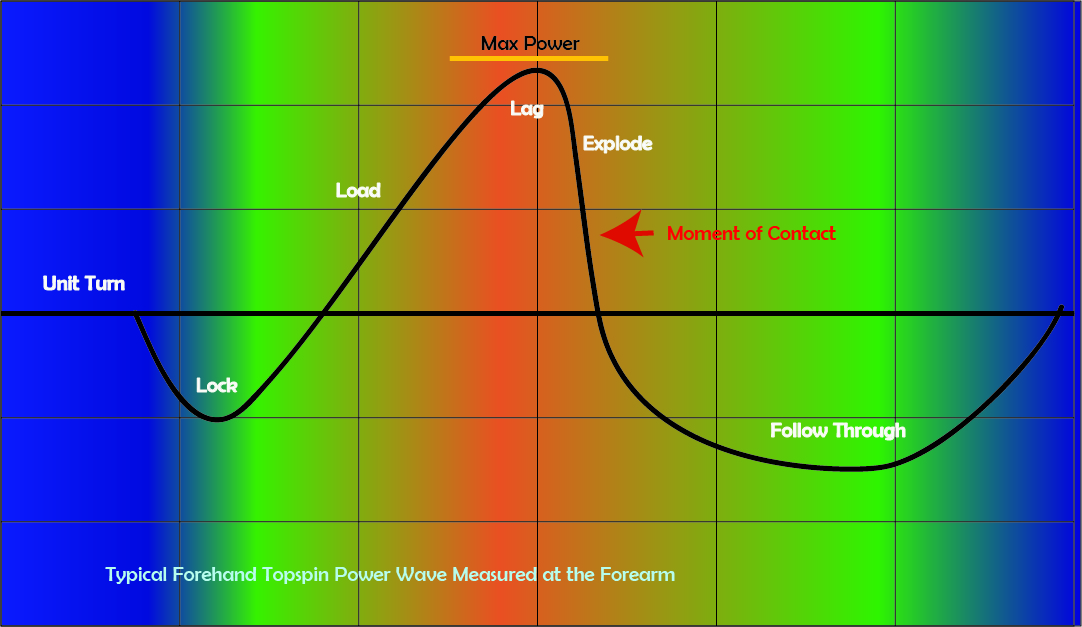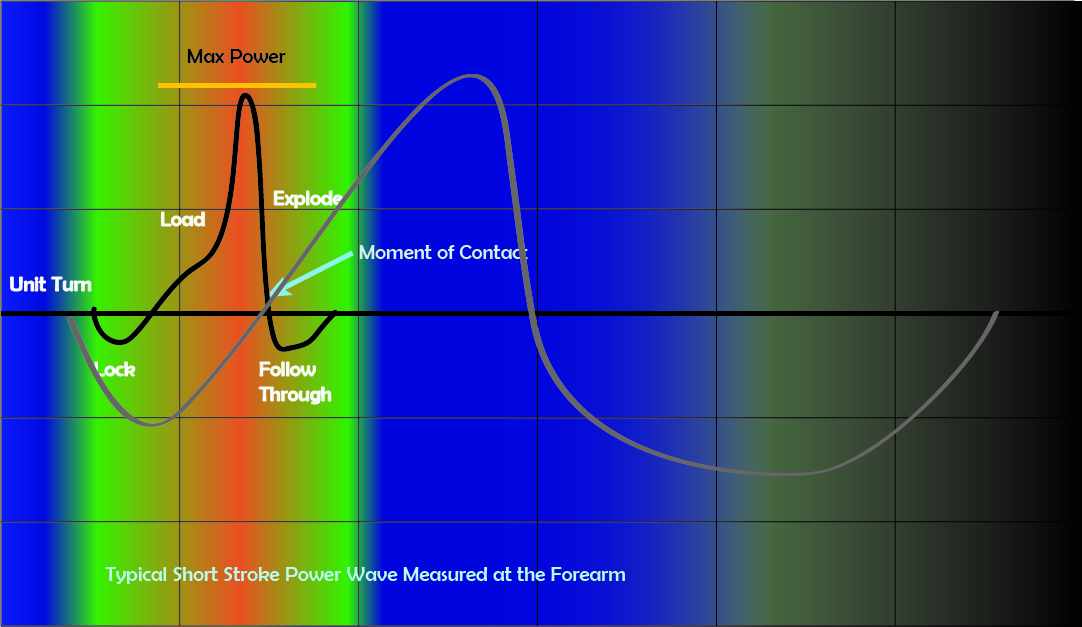Wave Theory and Tennis
The classic understanding of the tennis stroke is as a mechanical "rods-and-levers" contrivance vis: the legs turn the hips - the hips turn the shoulders - the shoulder turns the arm - the arm does some stuff to address the ball and get the racket head going in the right direction and presto! The ball is sent along to its target with unerring accuracy, irresistible power and screaming spin. That is the fantasy we carry around in our noggins, reinforced with terms such as the "kinetic chain" from the literature of tennis that reinforce such delusions. For some odd reason, this idea never seems to work out for us. Every time we adjust one cog in our corporal clockwork, it seems to throw our game into chaos. As an example, one might bend the elbow a bit to gain control over the position of the wrist to better guide the strings to the ball and avoid miss-hits. That makes sense - more control is good, right? The result is more mis-hits, a complete loss of pace, control, and spin, and a sore elbow. Is this beginning to sound familiar?. There are way too many objectives in tennis - adding spin, addressing the ball, creating pace and control, etc. to do it all with a series of tightly linked motions. Each of these objectives must be achieved by a system that is separate and distinct from the others in both time and space. Thus the muscles of the forearm are largely responsible for control while pace comes from the larger muscles of the shoulders, trunk, and legs. If you start tensing your forearm to get more pace, you lose control. If you fail to establish balance with your quadriceps muscles, your brain will recruit the muscles in your upper body and wreck the rest of your stroke. Each body unit in a stroke has its own set of responsibilities and is on its own schedule, and that schedule is not "first A completes then B starts, then B completes, then C starts ... " We achieve balance in the serve as the left hand is tossing the ball and the right arm is relaxed in preparation for the hitting sequence. They are independent of one another, and each has its own start and finish time. If each component has to wait for the other to get the energy and momentum it needs to complete its task then what you have is a house of cards, not a stroke.

Each of the functional units of a stroke requires power to operate. Power is the ability to make things move, stop moving or change direction. It is a combination of energy and momentum. Energy for tennis stroking comes mostly from the muscles and a bit from gravity. Energy is necessary to influence the flight of a tennis ball, but it is also insufficient.
Power
One must also harvest momentum, mostly from the earth. If you have ever tried to hit a tennis ball while floating, weightless, in space ... sorry, bad example. You probably have not tried that yet. I have suffered from the delusion that I could stand flat-footed with no solid purchase on the court and hit a tennis ball 100mph with just the power of my muscles and my indomitable will.
Footwork is the primary source of momentum. Setting the back foot on a groundstroke, keeping the knees bent and the bodyweight bouncing from one foot to the next, orienting the feet so that the momentum generated is in a proper direction for the stroke are all essential for the production of power. Power must be created and distributed to each part of the body as that part needs it. Power is the raw material for pace, spin, and control. After all, what is control but the ability to direct a ball to the desired target; to change its momentum? Each component needs the power to reach it when the component need its and in the form that the component can use it. A mechanical linkage will not suffice. The power must be packaged and delivered in the form of a wave.

